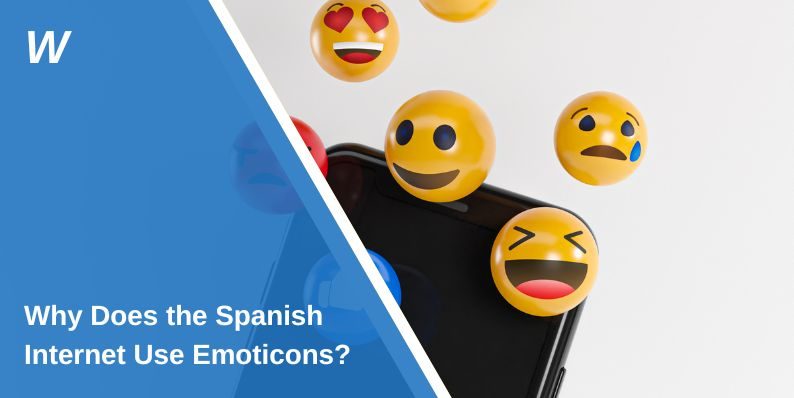Why Spanish Users Love Emoticons on WhatsApp and X
If you’ve ever scrolled through Spanish chats or social media, you’ve probably seen lots of smiley faces, “XD,” or hearts at the end of messages. It’s not random; it’s part of how Spanish speakers write online. These small symbols show emotion, soften tone, and make digital messages feel more human.
In Spanish, communication often feels warm, expressive, and social. Online, emoticons help keep that same energy. Let’s look at why Spanish users rely on them so much and what it says about their language and culture.
What Are Emoticons and How They Work
![]()
Emoticons are simple text symbols that express emotions using punctuation and letters like 🙂 For a smile or XD for laughter. They existed long before colorful emojis took over smartphone keyboards.
In early internet days, Spanish speakers used them on MSN Messenger, Tuenti, and through SMS texting. Since digital writing removes voice and tone, these small symbols helped make messages sound friendly instead of flat. For many, emoticons became a natural part of typing, just like punctuation marks.
Unlike emojis, which are pictures, emoticons feel more personal. They’re fast to type, light, and carry a nostalgic style that’s still common in Spanish chats today.
Cultural and Linguistic Reasons for Emoticon Use
The Spanish language itself is full of emotion and rhythm. In speech, people use tone, hand gestures, and facial expressions to show friendliness and warmth. But in text, those signals disappear. Emoticons replace that missing emotion.
They help avoid misunderstandings and make messages sound polite or caring. For example, saying “Vale :)” (Okay) feels softer than just “Vale.” A small symbol can change how a message feels, turning something neutral into something kind or playful.
Spanish speakers also value closeness and connection in communication. Using emoticons keeps conversations friendly and expressive, even in quick messages.
Influence of Social Media and Messaging Apps
The rise of WhatsApp, Twitter, and Instagram made emoticons and emojis part of everyday communication. These platforms encourage fast, emotional exchanges where tone matters more than formality.
Some common Spanish uses include:
- “Vale :)” – to confirm politely.
- “Te veo luego XD” – to show humor or playfulness.
- “Gracias <3” – to express gratitude warmly.
This style fits perfectly with the Spanish way of mixing humor, emotion, and friendliness in daily talk. Even businesses and influencers often use emoticons to sound approachable and human online.
Regional and Generational Differences
While emoticons are popular across Spanish-speaking countries, styles vary by region and age. In Spain, people still use old-school expressions like “XD” or “;D.” In Latin America, emojis have mostly replaced them, with favorites like 😂, 😅, and ❤️ appearing in every chat.
Generations also differ. Younger users blend emoticons with slang or Spanglish, “lol XD” or “jajaja :)” while older users keep it simple. This mix shows how emoticons evolve as technology and culture change.
Conclusion
Spanish speakers don’t use emoticons just for decoration. They use them to express emotion, warmth, and tone, making writing feel more like talking. These symbols help digital messages stay human, polite, and friendly, even across screens.
As technology adds new emojis and AI tone tools, the classic smiley and “XD” still hold meaning. They remind us that no matter how advanced communication becomes, people will always find small ways to show feeling and connection online.
- Can People Dox You Through Xbox Game Pass Profile? - December 8, 2025
- How to Fix Black Vertical Lines on a Monitor: Easy Troubleshooting Steps - December 5, 2025
- How To Fix Steam Error Code 2 When You Can’t Add Items? - December 1, 2025
Where Should We Send
Your WordPress Deals & Discounts?
Subscribe to Our Newsletter and Get Your First Deal Delivered Instant to Your Email Inbox.



